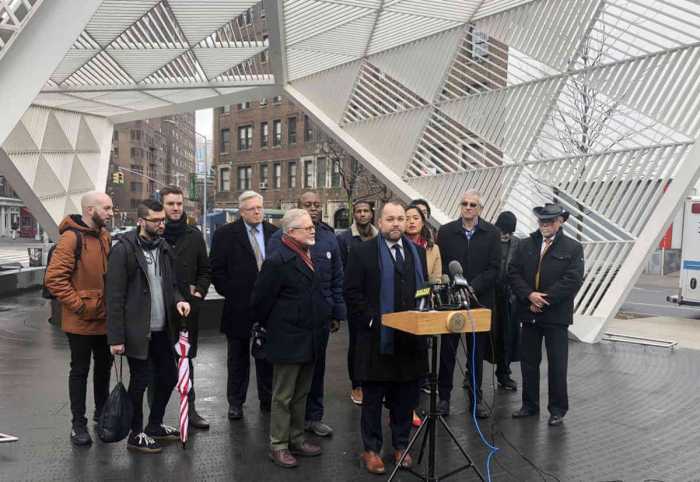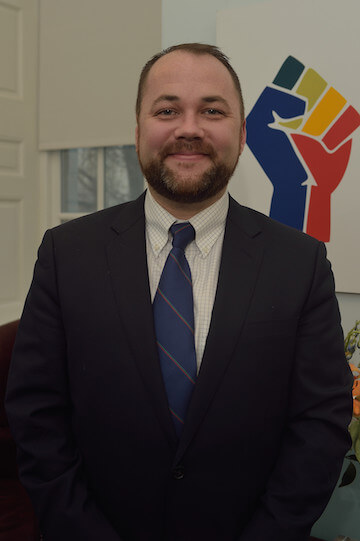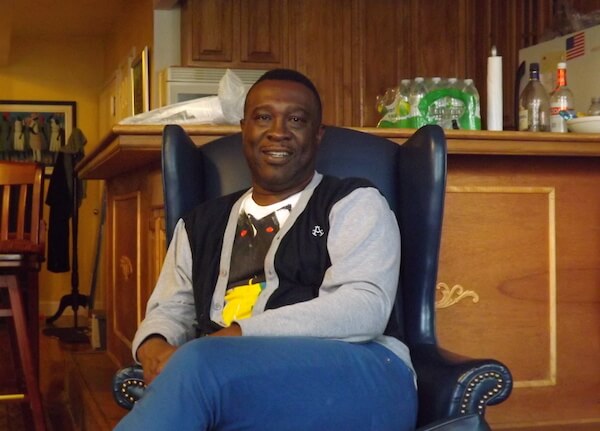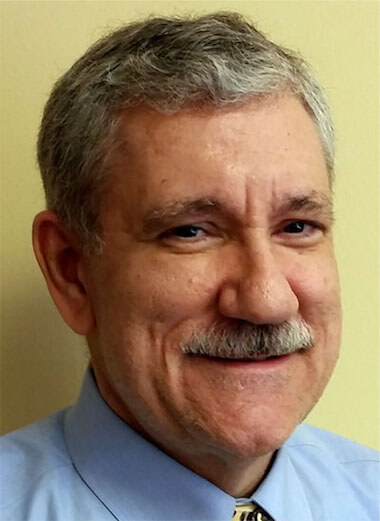Governor Andrew Cuomo and Dr. Howard Zucker, the interim state health commissioner, at last June's Pride Parade announcing New York’s commitment to a plan to effectively end the AIDS epidemic by 2020. | GAY CITY NEWS
BY DUNCAN OSBORNE | A study presented at the Conference on Retroviruses and Opportunistic Infections suggests that New York City will have to get tens of thousands of gay and bisexual men on pre-exposure prophylaxis (PrEP) to achieve the 75 percent reduction in annual new HIV infections that the state’s Plan to End AIDS has set as its primary goal.
“A third way to set goals for PrEP rollout would be to estimate PrEP impact and decide how much PrEP we have to use to achieve that impact,” said Dr. Robert Grant, a researcher at San Francisco’s Gladstone Institutes, who presented at the conference, which met in Seattle last week.
Grant, who was the lead researcher on the first study that demonstrated PrEP’s efficacy, modeled how many people in San Francisco would have to be on PrEP and how many HIV-positive people would have to have no detectable HIV in their blood to achieve a 70 percent cut in new HIV infections in that city.
Reducing HIV infections by 75 percent could require tens of thousands of gay men on preventive meds
In Grant’s model, San Francisco would see a 70 percent cut in new HIV infections if 95 percent of the roughly 16,000 people in San Francisco who are in the “highest risk strata” for HIV infection, or nearly 14,200 people, were taking PrEP and 62 percent of those who are HIV-positive were taking anti-HIV drugs and so were undetectable. San Francisco reported 359 new HIV infections in 2013.
There were 2,832 new HIV infections in New York City in 2013, and 1,609, or 57 percent, were among gay and bisexual men. The city accounts for roughly 95 percent of the new HIV infections in New York State, so the plan, which aims to cut new HIV infections to 750 a year by 2020, will have to significantly reduce new HIV infections among gay and bisexual men. The HIV infection rate among those men has been high and stable for 13 years.
PrEP uses anti-HIV drugs in HIV-negative people to prevent them from becoming infected. It is highly effective when taken correctly. When HIV-positive people adhere to their anti-HIV drugs, the amount of virus in their bodies is reduced to the point that they are no longer infectious.
While New York City’s epidemic is about eight times larger than San Francisco’s epidemic that does not mean that New York will have to get eight times the number of people on PrEP. But it strongly suggests that the city will have to have tens of thousands of HIV-negative people on PrEP. How to hit those numbers is what confronts advocates and public health officials.
In a statement, New York City’s health department said it “continues to be a recognized national leader in promoting PrEP to both potential users and providers of care” and that it is “committed to expanding access to PrEP through a variety of mechanisms.”
The health department has trained its own clinical staff to educate clients on PrEP and it is prescribing the drug regimen. In 2013 and 2014, it trained 310 front line staff and doctors outside of the department on delivering PrEP and it educated “60 individuals” in two workshops in October on how to create “comprehensive PrEP programs in their practices.” Some of this training included discussion of post-exposure prophylaxis (PEP), which is a 28-day course of anti-HIV drugs that prevents infection in HIV-negative people with a very recent exposure to the virus.
The department has also sent staff into doctors’ offices to teach them about PrEP and PEP. To date, those staff reached “369 clinical sites” and 865 doctors, nurse practitioners, or physician’s assistants in all five boroughs, the statement said. “Preliminary data show an increase in PrEP prescriptions among providers visited between the initial and follow-up visits.”
Some data indicate that people who are most at-risk for HIV infection are most likely to adopt PrEP, which will aid in growing PrEP use. In studies presented at the conference, adherence to PrEP was good, though that was a significant problem in earlier studies. Other presentations made at the Seattle conference show that scaling up PrEP use is very much on the minds of community health groups, researchers, and clinicians.
In New York City, Gay Men’s Health Crisis held a series of town halls beginning in 2014 that educated the community about PrEP. In a statement, the AIDS agency, which was represented on the task force that drafted the state’s plan to reduce new HIV infections, said, “GMHC continues to advocate for better PrEP access and affordability, and the nuance of how to make that happen will be addressed in the Ending AIDS Task Force Blueprint submitted to Governor Andrew Cuomo.”




































